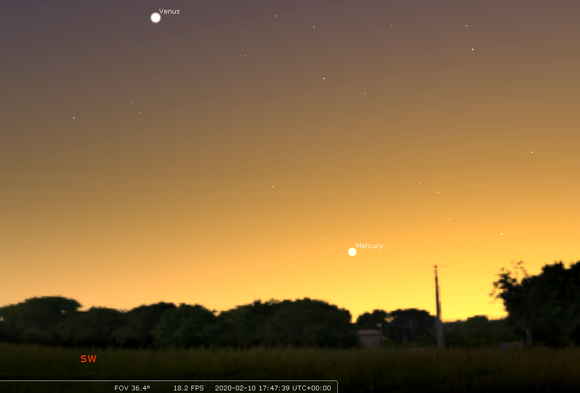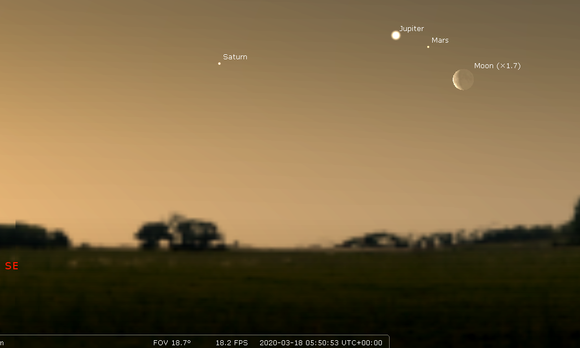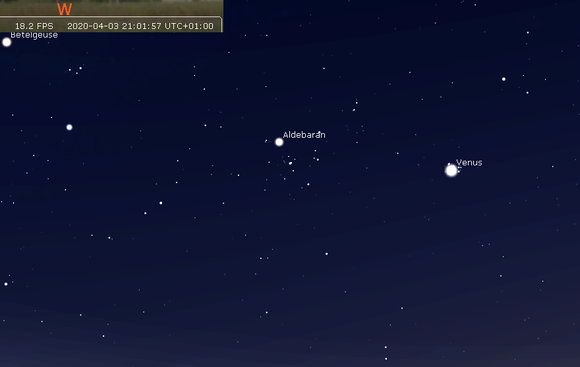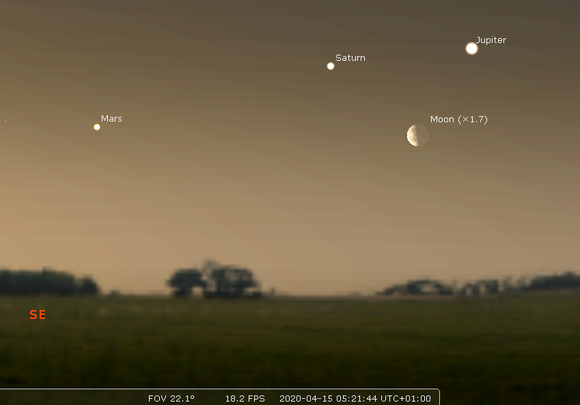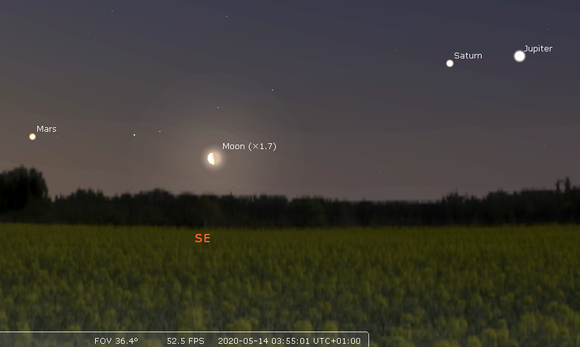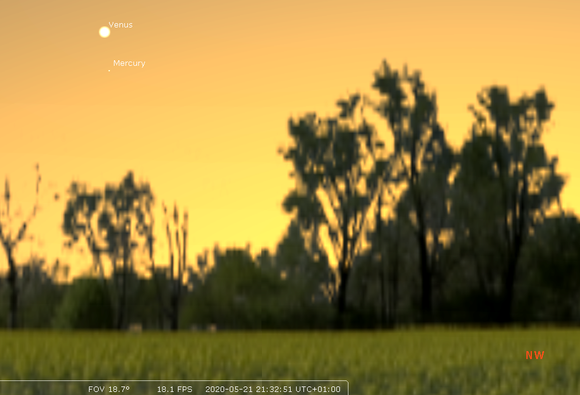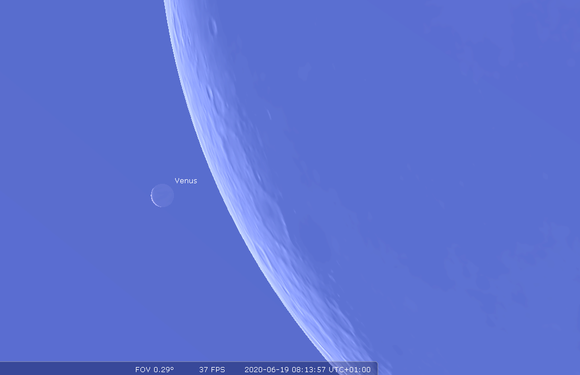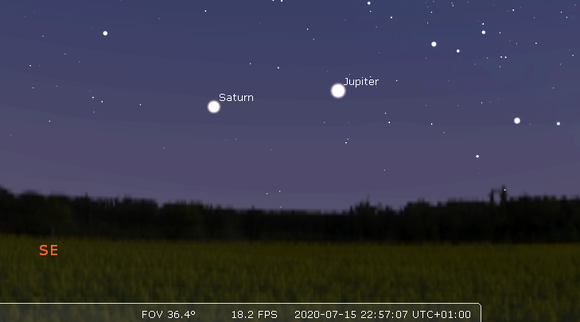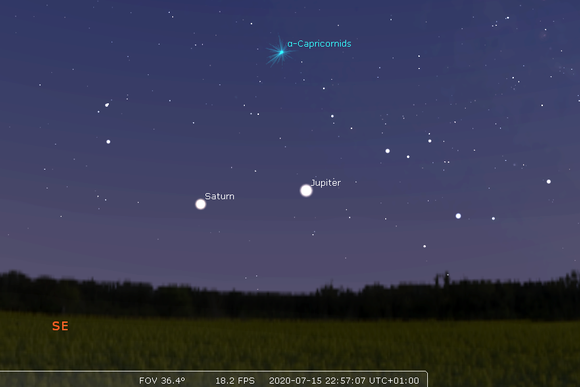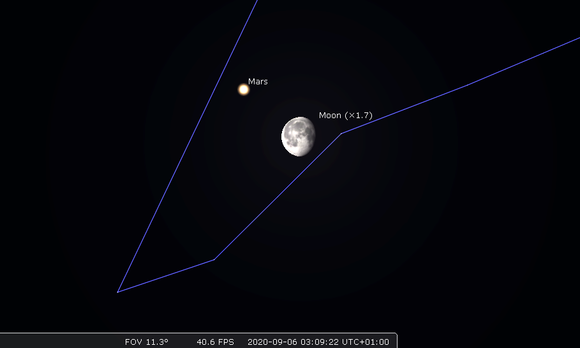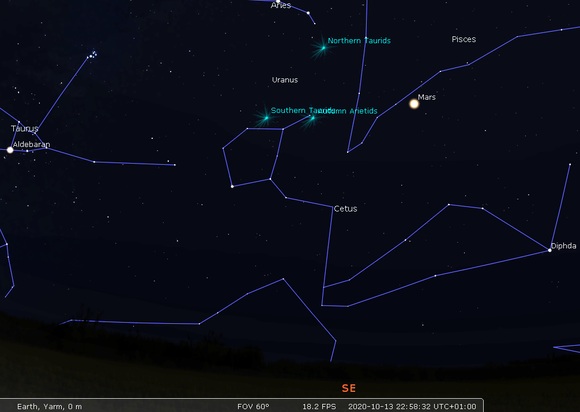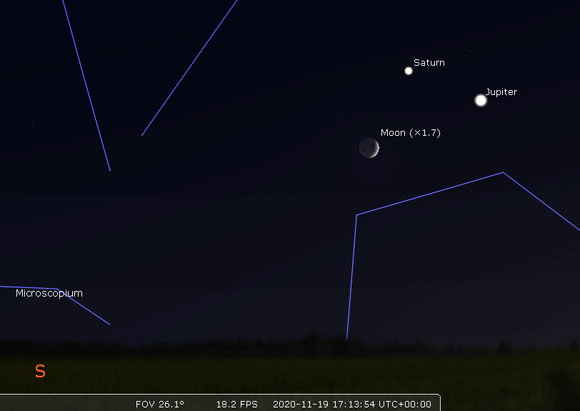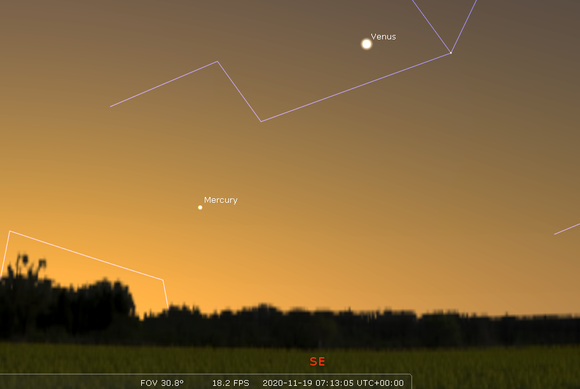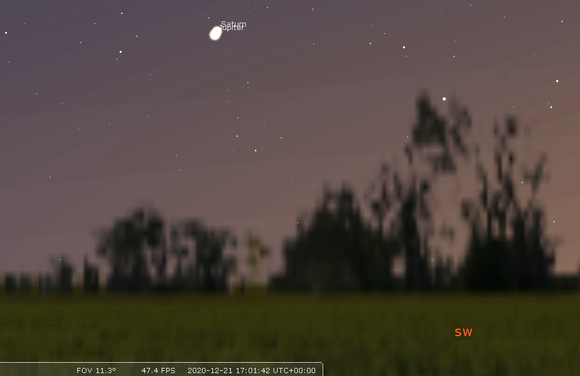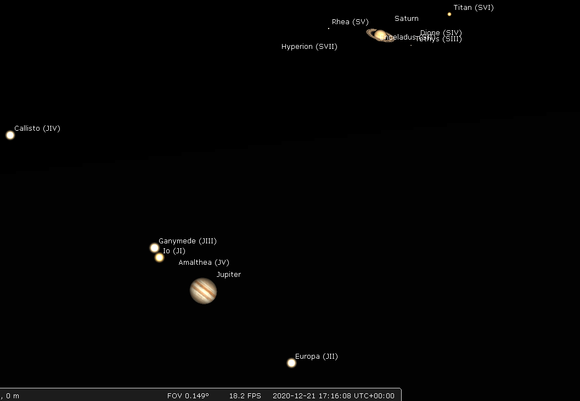February
Mercury has a fine evening apparition during February – the best of the year, Whilst Venus continues to climb higher into and dominate the evening sky. Saturn returns to the morning sky, joining Jupiter and Mars.
(For all the images below, click to see the full-sized image.)
March
March sees Venus continuing to dominate the evening sky and is in conjunction with Uranus on the 8/9th, whilst in the dawn sky, Mars is really motoring, passing below both Jupiter and Saturn over the course of the month
April
Venus encounters the Pleiades in early April, blundering right through the seven sisters. Mars, Jupiter and Saturn continue to hold court in the dawn sky and the Lyrid meteors are favourable on the 22nd.
May
During May, Venus drops back toward the SW horizon passing Mercury as it arcs up and round during the latter part of the month. The early dawn sky continues to play host to Mars, Jupiter and Saturn, although the red planet has by now put some distance between it and the gas giants.
June
Mercury is viewable for the first week of June after sunset, so it’s the very late evening and early morning hours which provide much of the planetary interest, hosting Mars, Jupiter and Saturn. However, perhaps the highlight of the month is the occultation of Venus by the Moon in broad daylight. Care and scrutiny will be required for this event.
July
Both Jupiter and Saturn come to opposition in July and will be visible low in the sky from sunset to sunrise. The two planets are relatively close together in the sky and continue to draw together in the coming months. Mars is visible in the early morning sky in the SE, whilst Mercury and Venus lie round in the ENE. The moon occults the deep sky object M1 – the Crab nebula on the 18th around 03:30h.
August
Jupiter and Saturn dominate the August evening sky Whilst, Venus dominates the early mornings. Mars is finally growing brighter and larger in the eyepiece. The Perseid meteor shower is best observed during the evening of the 12th, the moon interfering with observations post midnight. The minor planet Vesta careers through the open cluster M44 (the Beehive in Cancer at the end of the month.
September
September, and the Jupiter and Saturn combo continues to draw the eye during the early part of evening, well placed low to the south as twilight falls. Their dominance is however challenged by Mars which brightens considerably throughout the month; becoming a brilliant orange beacon located in the ESE. Distant Neptune reaches opposition, located near phi Aquarius. Venus reigns supreme in the dawn sky.
October
October: Jupiter and Saturn continue to edge closer together, but the highlight is the opposition of Mars around mid month, the red planet now being the dominant object in the night sky. Venus dominates the early morning sky and lies very close to Regulus in Leo on the 3rd. Both the Draconid and Orion meteor showers are favourable, not compromised by moon light. Uranus comes to opposition at the end of the month.
November
Throughout November Jupiter and Saturn continue to close, residing low in the SW during the early evening. Mars dominates the evening sky to the south, whilst Venus dominates the morning sky and is joined by Mercury from mid month. The Leonid meteor shower is favourable over the night of the 17/18th.
December
December, and the year ends with a spectacular planetary conjunction involving Jupiter and Saturn separated by just 6 arc minutes on the 21st. The pair will be sliding down into the SW evening twilight, appearing almost as one object to the naked eye. Mars continues to be a prominent object to the south. Venus is likewise in the morning sky, but dropping back to the horizon. Finally both the Geminid and Ursid meteor showers will be favourable.
There may be no worthwhile eclipses visible from the UK or any predicted naked eye comets, this year, but the planetary action in 2020 certainly makes up for the lack of these.
- Log in to post comments

